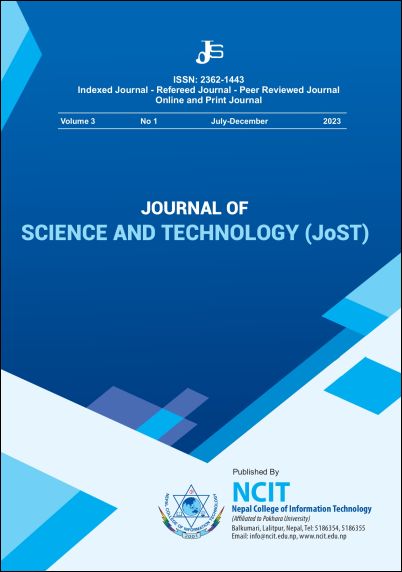Improving Breast Cancer Classification using Local Binary Pattern in Bit Plane Slicing and CNN
DOI:
https://doi.org/10.3126/jost.v3i1.69059Keywords:
Breast Cancer, Bit Plane Slicing, LBP, CNN, Entropy, Texture Analysis, Recognition RateAbstract
Breast cancer is a most common women's health problem and considered the most dangerous disease among females. Breast cancer affects 8% of women at some time in their lives and is the main cause of cancer death, according to various statistics. The only way to consistently detect early and potentially curable breast cancer is to use mammography screening. The first step in the identification process is image segmentation. Most of the algorithm results for detecting textures or cancer cells work well on binary images. Texture analysis is crucial for distinguishing between normal and aberrant types. The images' bit planes are examined individually and in different ways. The classification takes into account the attributes found on these bit planes. The Local Binary Pattern operator can also be used to extract texture features. To distinguish between normal and abnormal tumors, the retrieved textural features can be trained and classified using the Convolutional Neural Network (CNN) classifier. The conclusion of the classification model depends on the data set and how the characteristic was extracted from the data set. This method is unbiased by the type of anomaly and can be used to supplement computer-assisted detection based on the detection of specific abnormal structures. Therefore, in many cases of images, the algorithm provides an accuracy of 93.11% or more.




